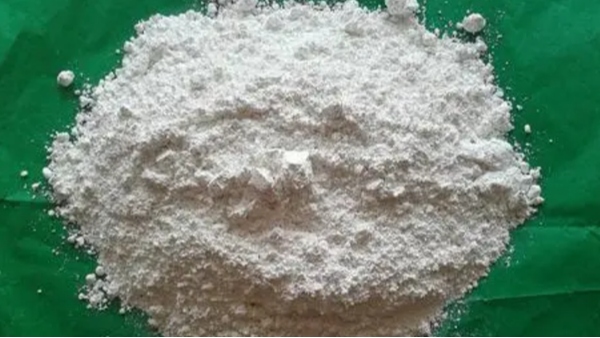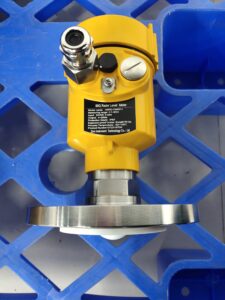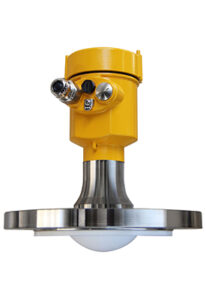More and more industries need to measure different items, some of which are solid particles. Calcium oxide powder is one such solid particle that can be measured using a radar-level meter. However, there are some difficulties and problems in measuring calcium oxide powder using a radar level meter.
In this paper, we will introduce the characteristics of calcium oxide powder, the measurement difficulties of radar level meter, and two practical measurement cases.

Calcium oxide powder is a solid item made by burning and reducing limestone, which has certain characteristics and measurement difficulties.
Fine powder particles: calcium oxide powder particles are very fine and sometimes powdery, which makes level measurement difficult.
Easy to cause clogging: After being transported and stored, calcium oxide powder is easily deposited at a very small diameter, which leads to clogging in the discharge area and increases the difficulty of level measurement.
Dust disturbance: During the measurement process, the calcium oxide powder tends to fall onto the side wall causing errors due to dust disturbance.
Temperature and humidity change: high temperature and high humidity environment will adversely affect the measurement of calcium oxide powder, to avoid such a situation you can choose a suitable radar level meter.

Despite some difficulties and problems, radar level meters are still a very effective measurement tool for many granular items, including calcium oxide powder. Compared to conventional level meters, radar level meters are characterized by fast response time, high accuracy, and high reliability.
When making calcium oxide powder measurements, the following need to be noted: Choose a suitable model: Different models of radar level meters are suitable for the measurement of different granular materials, which need to be selected according to the actual situation.
Choose a suitable location to install: to choose a suitable location to install the radar level meter, the placement height and angle also need to pay attention to ensure the precision and accuracy of the measurement.
Perform accurate calibration: the accurate calibration of the radar level meter is very critical, especially for calcium oxide powder and other fine materials.
When calibrating, attention should be paid to setting parameters such as the reference standard and sensitivity of the instrument according to the actual situation.

Let’s understand together through two actual measurement cases.
Case 1: A cement factory used a radar level meter for calcium oxide powder measurement, but because the calcium oxide powder particles are too fine, they are easy to adhere and deposit at a very small diameter, which leads to a slow response speed of the instrument and lower accuracy.
The enterprise made technical improvements and added a dispersing powder device unique to fine particle materials to the instrument, which improved the accuracy and precision.
Case 2: A steel plant used ordinary level meters, but there were often large errors, which brought inconvenience to production. Later, they adopted the radar level meter and then found that the instrument had a fast response time and high accuracy, and could measure the level of calcium oxide powder stably and accurately. This provided more accurate data support for the enterprise’s process production.

In calcium oxide powder measurement, the radar level meter has the characteristics of fast response time, high accuracy as well as high reliability, which can better cope with the difficulties and problems existing in calcium oxide powder in the application.
However, in the actual application, it is necessary to pay attention to some specific application scenarios and situations, such as the fine granulation of calcium oxide powder and the influence of factors such as temperature and humidity, in order to avoid negative effects on the quality of the instrument and the measurement.
We hope that this paper, through the analysis of the characteristics of calcium oxide powder and the measurement difficulties of radar level meter, as well as the introduction of two actual cases, can provide reference and help for the process production of relevant users and improve the production efficiency and product quality.
